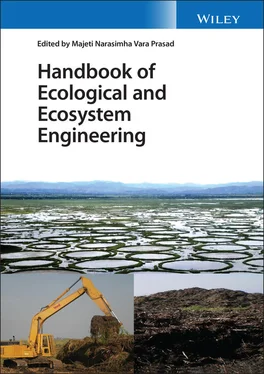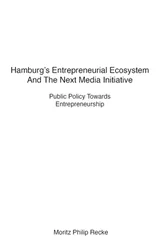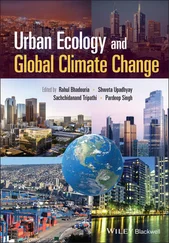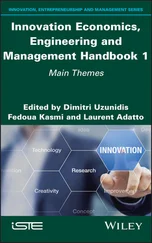58 58 Muchane, M.N., Sileshi, G.W., Gripenberg, S. et al. (2020). Agroforestry boosts soil health in the humid and sub‐humid tropics: a meta‐analysis. Agriculture, Ecosystems and Environment 295: 106899.
59 59 Boeraeve, F., Dendoncker, N., Cornélis, J.‐T. et al. (2020). Contribution of agroecological farming systems to the delivery of ecosystem services. Journal of Environmental Management 260: 109576.
60 60 Dendoncker, N., Boeraeve, F., Crouzat, E. et al. (2018). How can integrated valuation of ecosystem services help understanding and steering agroecological transitions? Ecology and Society 23.
61 61 Garbach, K., Milder, J.C., DeClerck, F.A.J. et al. (2017). Examining multi‐functionality for crop yield and ecosystem services in five systems of agroecological intensification. International Journal of Agricultural Sustainability 15: 11–28.
62 62 Duru, M., Therond, O., Martin, G. et al. (2015). How to implement biodiversity‐based agriculture to enhance ecosystem services: a review. Agronomy for Sustainable Development 35: 1259–1281.
63 63 Andersson, E., Nykvist, B., Malinga, R. et al. (2015). A social–ecological analysis of ecosystem services in two different farming systems. Ambio 44 (S1): 102–112.
64 64 Barral, M.P., Rey Benayas, J.M., Meli, P. et al. (2015). Quantifying the impacts of ecological restoration on biodiversity and ecosystem services in agroecosystems: a global meta‐analysis. Agriculture, Ecosystems and Environment 202: 223–231.
65 65 Lemaire, G., Franzluebbers, A., Carvalho, P.C.F. et al. (2014). Integrated crop–livestock systems: strategies to achieve synergy between agricultural production and environmental quality. Agriculture, Ecosystems & Environment 190: 4–8.
66 66 Palm, C., Blanco‐Canqui, H., DeClerck, F. et al. (2014). Conservation agriculture and ecosystem services: an overview. Agriculture, Ecosystems & Environment 187: 87–105.
67 67 Wezel, A., Casagrande, M., Celette, F. et al. (2014). Agroecological practices for sustainable agriculture. A review. Agronomy for Sustainable Development 34: 1–20.
68 68 van Oudenhoven, A.P.E., Petz, K., Alkemade, R. et al. (2012). Framework for systematic indicator selection to assess effects of land management on ecosystem services. Ecological Indicators 21: 110–122.
69 69 Porter, J., Costanza, R., Sandhu, H. et al. (2009). The value of producing food, energy, and ecosystem services within an agro‐ecosystem. Ambio: A Journal of the Human Environment 38 (4): 186–193.
70 70 Dale, V.H. and Polasky, S. (2007). Measures of the effects of agricultural practices on ecosystem services. Ecological Economics 64: 286–296.
71 71 Francis, C., Lieblein, G., Gliessman, S. et al. (2003). Agroecology: the ecology of food systems. Journal of Sustainable Agriculture 22 (3): 99–118.
72 72 Mitsch, W.J. and Jørgensen, S.E. (2003). Ecological engineering: a field whose time has come. Ecological Engineering 20: 363–377.
73 73 Williams, J.W. and Jackson, S.T. (2007). Novel climates, no‐analog communities, and ecological surprises. Frontiers in Ecology and the Environment 5: 475–482.
74 74 Jones, C.G. (2012). Grand challenges for the future of ecological engineering. Ecological Engineering 45: 80–84.
1 1 Reference to the Aristotelian concept of the world, which was improved by Ptolemy (second century), according to which the Cosmos is divided into sublunary (imperfect world of human beings) and supralunary (perfect world of eternal and absolute beings) regions.
2 2 Reference to the Greek myth of Icarus, son of Daedalus, who did not listen to the advice of his astute father and flew with wax wings beyond where he should have. Daedalus represents the experience, thoughtfulness and moderation of the sage, whereas Icarus represents the impetus and immaturity of youth, which can lead to misfortune and even to death.
3 3 Reference to the Greek myth of the Moirae (Fates), three sisters who wove and cut the threads determining the fate of gods and human beings.
4 4 Concept proposed and developed by Nassin Nicholas Taleb in the book Antifragile: Things That Gain from Disorder, Random House, 2012. Antifragility is the opposite of fragility; it is a property of complex natural or social systems that benefit from stressors, volatility, and randomness. Over‐intervening in natural systems that have survived billions of years by depriving them of stressful, random, and volatile interactions can weaken them and/or trigger unpredictable consequences due to multiplicative chains of unexpected effects.
5 5 It refers to the development and dissemination of new agricultural practices, such as the use of agrochemicals, pesticides, and seed processing, which have enabled significant production increase since the 1960s.
2 Ecological and Ecosystem Engineering for Economic‐Environmental Revitalization
Bruno Barbosa1,2 and Ana LuÃsa Fernando1
1 MEtRICs, Departamento de Ciências e Tecnologia da Biomassa, Faculdade de Ciências e Tecnologia, FCT, Universidade Nova de Lisboa, Caparica, Portugal
2 Universidade Feevale, Novo Hamburgo – RS, Brazil
A variety of factors can confer marginality to a particular soil [1–3]. This fact is reflected in the number of scientific publications related to ecological and ecosystem engineering. In a brief search of the literature, it is simple to find many published articles containing results from soils contaminated with heavy metals or organic compounds, or describing other chemical, physical, and biological properties that are unfavorable to the proper functioning and balance of soil ecosystems [4–8]. In a particular degraded soil, multiple disturbances in physical, environmental, and biological factors can be found. Indeed, soils may be marginal due to factors such as temperature, waterlogging, unfavorable soil texture and stoniness, dryness, shallow rooting depth, poor chemical properties of the soil (salinity and sodicity), steep slopes, soil layer restrictions, low biological production, acidity and alkalinity, the presence of organic and inorganic contaminants, and so on [9, 10]. Emergent contaminants, such as microplastics, can also confer marginality to soils [11, 12]. Likewise, socioeconomic factors may influence the marginality of a given soil [13, 14].
Physical factors such as soil compaction can interfere with soil drainage, the depth of plant roots, soil porosity, soil aeration, and gas transport properties, factors that together can also induce changes in the soil microbial composition and increase the emissions of greenhouse gases such as N 2O [15]. Such physical disturbance of soil can lead to a scarcity of oxygen at the root level, limiting plant growth and nutrition and creating conditions that may lead to the development of soil pathogens [10]. These changes in soil may also cause low rates of water infiltration and low hydraulic conductivity, which in turn will lead to lower gas diffusivities and air permeability, increasing the risk of developing anaerobic conditions in compacted soils [16, 17]. Such events and consequences induced by altering a single soil factor show the complex level of disturbance that can occur when more than one soil factor is changed. The same thing can occur with other physical factors at the chemical and biological/environmental levels.
Inorganic and organic compounds can alter soils' chemical conditions, constituting chemical factors that provoke marginality in soil environments to different degrees. Organic and inorganic soil contaminants pose numerous risks for the soil environment, producing ecological dysfunctions, disorders in the structure and functioning of soil microbial communities and soil biota in general, and animal and human health [18]. For example, heavy metals in soils can lead to toxicosis in both animals and plants [19, 20]. These soil contaminants can impact biochemical processes in plants related to the production of enzymes and antioxidants involved in protein mobilization and in the photosynthetic process [21], also impacting plant growth parameters, yields, and water and nutrient balances [22, 23]. Indeed, heavy metals can cause disturbances and dysfunctions in plant organisms not only in their biochemical processes, but also in their physiological and metabolic processes, including the absorption and assimilation of nitrogen [24]. Soil microorganisms play different roles in the biogeochemical process of the soil, but they can be severely affected by the presence of heavy metals in soils [25, 26]. Long‐term exposure to heavy metals can alter the richness, diversity, and structure of soils' microbial communities. Factors like soil pH, which can be changed by heavy metals in the soil environment, can also alter the fungal community [27]. These are just some examples of how physical and chemical factors can affect soils. Most of the time, these factors act simultaneously on soil biota and soil properties: multiple restricting factors act synergistically, either positively (leading to soil revitalization) or negatively (increasing marginality) [10]. For example, despite having recorded losses in biodiversity caused by heavy metals, other authors have not registered any negative effect on the soil's microbial functional stability [28]. So, how can we control the path and direction of these synergies? Can engineering interventions predict and induce soil ecosystems in the direction of revitalization? Have we any control over the impacts resulting from our interventions?
Читать дальше












